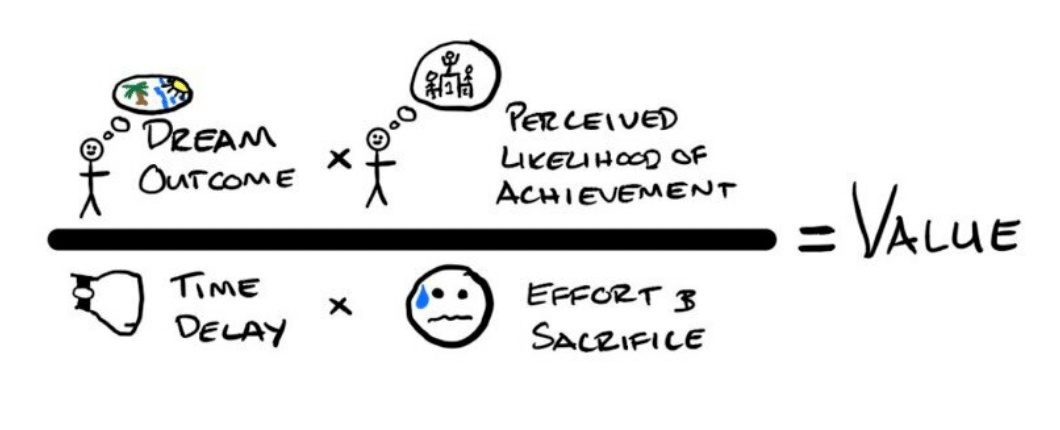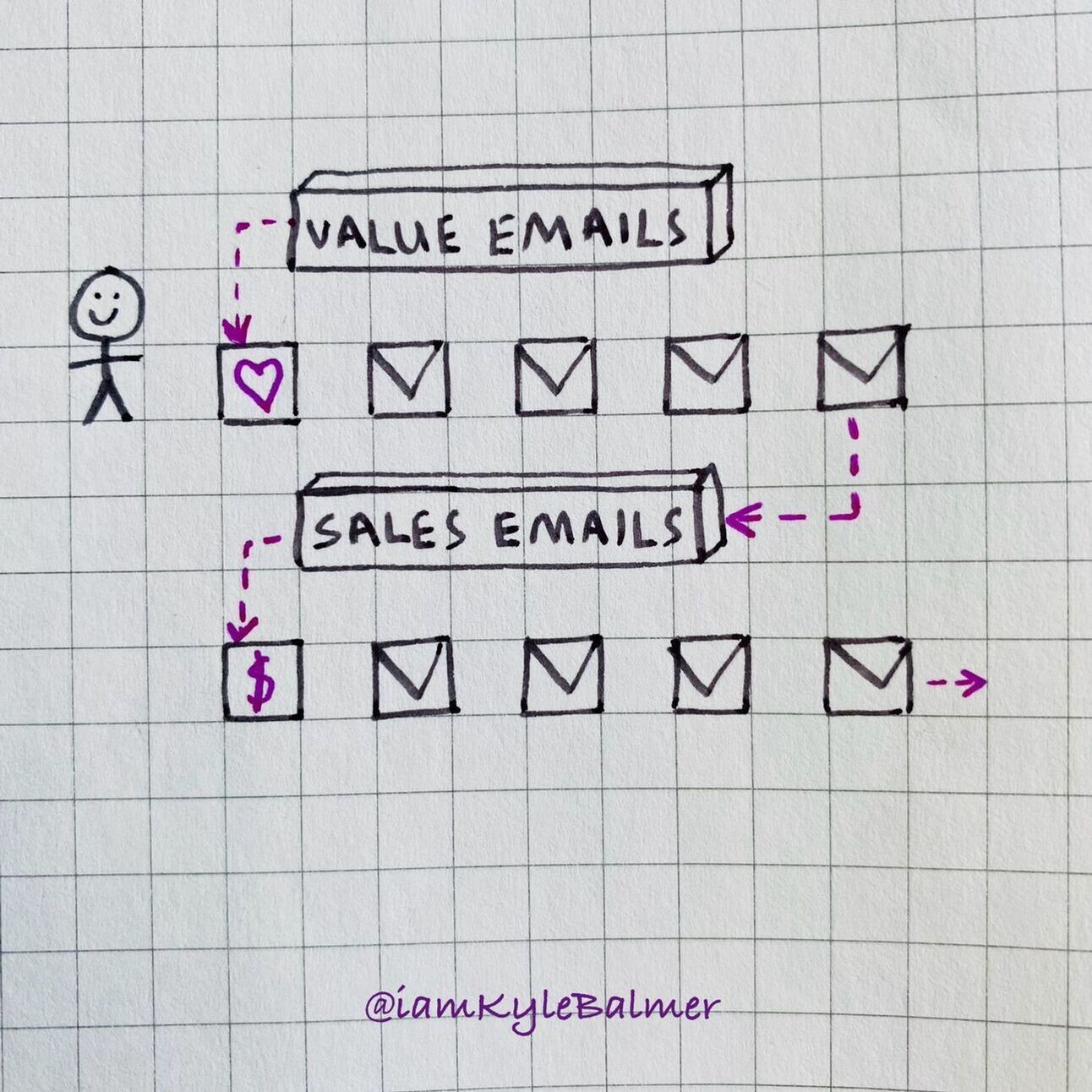Part 4 - Core Offers and Upsales
Into the heart of the matter - working out your core offer!
This is where you actually start to generate significant revenue. It’s the first proper sale.
Let’s get started:
Core offers and upsales
- keep following the thread
- core offer prompt using the value equation
- how to price your funnel elements
- taking people from lead to customer
- adding upsales
I’m going to sound like a broken record here. So be it!
To work out the transition from lead magnet to our core offer we need to come back to the common thread that runs through our sales funnel.
That thread is determined by the core problems we are solving for our customers.
Our core products needs to be the main vehicle through which we solve this problem.
If our customers’ problem is losing weight then our:
- content marketing might be about weight loss motivation
- lead magnet is a basic nutrition checklist about the items you need to immediately throw out of your kitchen
- core offer is a full nutrition plan and guidance on how to use it
Our core offer is something that requires a considerable investment from our customers - in both time and money.
It’s something they’ll take the time to consume. And are willing to spend a non-insignificant amount of money on to acquire.
But ultimately we are solving the same problem - just in more depth, with more guidance, more material and more motivation than the lead magnet that captured their attention.
Preparing our core offer
You may already have your core offer. It tends to be the product or service that most businesses start with.
Generally most businesses already have a core offer already and need to add a lead magnet beforehand and a premium offer afterwards.
If this is the case for you then make sure there’s a through-line. Don’t just jam your core offer into the sales funnel because you’ve already made it. That’s a false economy.
If starting from a clean slate let’s use this prompt to ideate core offer ideas:
Help me generate core offer ideas.
We'll use Alex Hormozi's value equation.
My niche is [topic]
My customers are [customer description]
Their main problems are [problems]
Ask me a series of questions to guide me through the value equation - one for each element
Wait for my inputs
Then based on inputs give me 5 core offer ideasThis uses Alex Hormozi’s value equation, which I’m a fan of. Here’s a diagram of the basic model:

You don’t need to know the model to use the prompt - just work through the questions it ask you and it’ll spit out potential core products.
Importantly make sure that the customer problems you input are the common thread of your sales funnel.
A note on pricing
The pricing at the various parts of your sales funnel will depend entirely on your niche, how strong your brand is and how much value you can demonstrate.
That said there are common “set points” that are used in online business a lot. Because…they work.
These are useful to get an idea of relative pricing in your sales funnel (and thus to work out how to price your core offer).
In general:
- lead magnet - free
- tripwire offer - $10-20
- core offer $50-200
- upsell offer $200-500
- premium offer $1000+
So when designing your core offer thing about something coming in at the low hundred range. Again, depending on your niche and what’s common!
Moving to Core: mechanisms?
How do we actually achieve our core offer sales in our sale funnel? What’s the mechanism?
Because, ultimately, our customers don’t know there’s a sales funnel. They don’t know there’s a next step until we tell them! How could they?
The way we do this is email marketing. Remember that we used a lead magnet to capture their email - we now deliver emails to tell them about the next steps.
This doesn’t mean we just spam them with emails about our core offer. They’ll quickly unsubscribe.
Instead deliver value and then talk about your core sale. That value comes in the form of content - and, you guessed it, it should be content that helps solve their core problems!
I’ve written extensively on writing a welcome series (with sales) in this Playbook: Welcome Series Email Marketing Playbook.

The basic recommendation I’d make is:
- find 5 top problems that your core product solves
- write 5 welcome emails that are pure value, giving basic advice on how to solve these problems
- follow these with 5 sales emails talking about your core offer
I use beehiiv to deliver my welcome and sales emails but there are lots of other email marketing tools out there. I use beehiiv personally because I also have an email newsletter.
Upsales
When is the best time to sell to someone?
The moment just after they’ve purchased from you!
There’s a phenomenon in sales and marketing called the “hot streak”.
Basically once someone has already opened their wallet and made a purchase they are likely to keep buying.
Once someone has decided to buy a car for $40,000 they are more likely to also want the leather seats for $3,000.
They aren’t thinking about the fact that the seats are $3,000. They are thinking “eh I’m spending $40,000 so what’s another $3,000”.
Your upsale can either be an offer bump that makes your core offer better somehow. Generally by making the outcome easier, faster or more certain for the purchasers. For example you’ve sold them a $200 course and for an extra $30 they can get the printed book version sent to them.
Or it could be a full upgrade to a new, better product or service. A halfway point between your core offer and the premium offer. A great example here is if you sell someone a video course for $200 and offer a $250 upsale to get some 1:1 time with you.
Speaking of premium - we’ll cover that in the next Part!